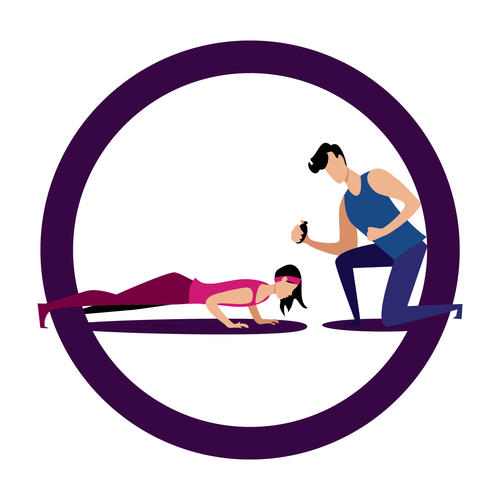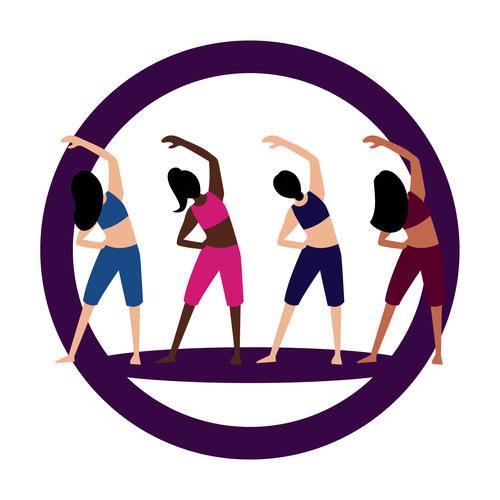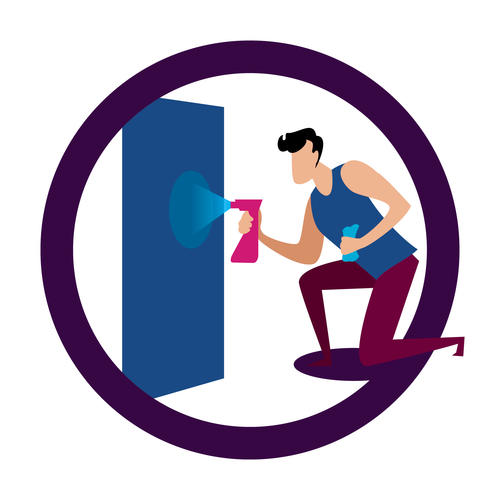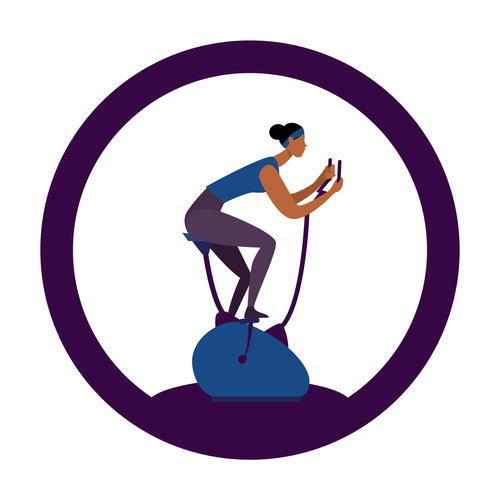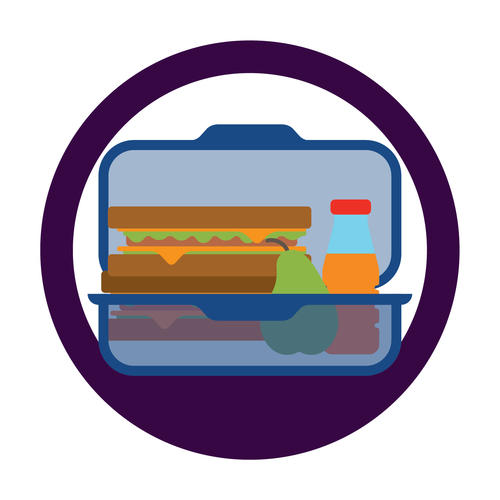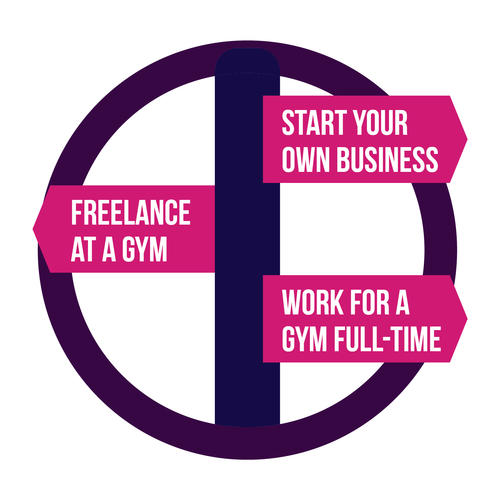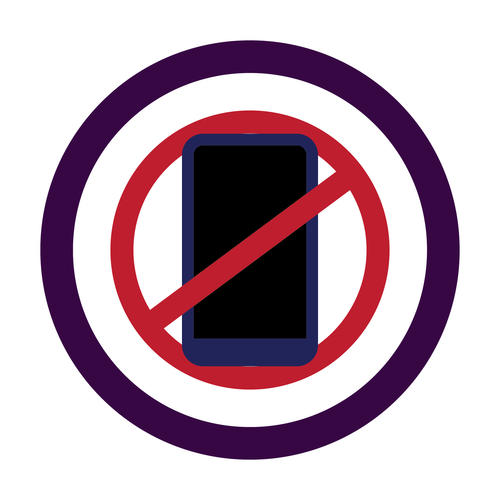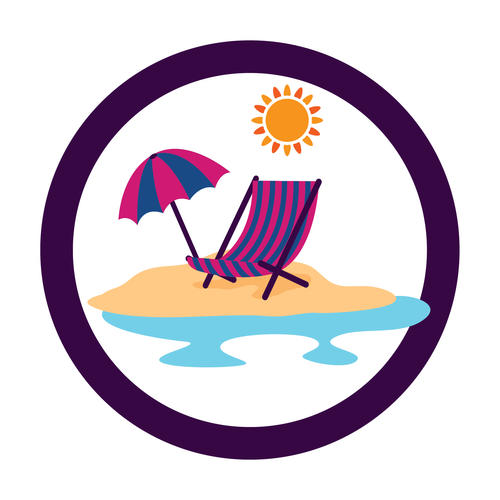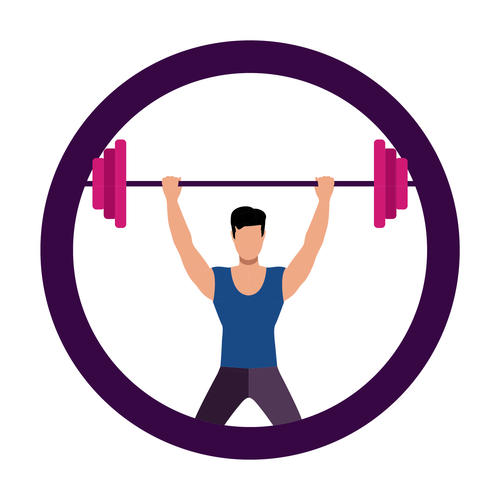If you’re thinking about becoming a personal trainer, you’ve probably thought about what a typical day in the life of a personal trainer looks like.
Choosing a new career is a big deal, so it makes sense that you want to know what it’s like to be a personal trainer before you commit to a change of career.
Fortunately, everything you could possibly need to know about life as a personal trainer is covered in this post!
We’ve started with a breakdown of the different roles and responsibilities of the job, shortly followed by a timeline of my personal average day working as a personal trainer.
After that, we’ve included the top things that you need to know about being a PT, and tips for having a successful career in this industry whilst keeping a healthy work-life balance.
If you’re confident that a career in the fitness industry is for you, then taking a Level 4 personal training course with OriGym is the best way to get started!
You can also download our free course prospectus here to browse the full range of courses we offer.
Personal Trainer Daily Tasks
So, you’re a fitness fanatic. You’ve been dedicated to your own exercise journey for a while now and you’re ready to make a career out of your passion – a bold move, but it will pay off!
Finding a job that you love is key to having a successful career and being generally happy in life.
If you think that working as a personal trainer is your calling, then we definitely recommend that you go for it!
What is it like to be a personal trainer? Before you check out our timeline of the average day working as a PT, here’s a list of the daily tasks that you can expect to carry out in this job
1. Training Clients
This one might seem obvious, but we had to include it. You’ll spend a lot of your time on the gym floor carrying 1-1 personal training sessions with clients.
Training clients is your ultimate goal in this job, a lot of your other responsibilities are based around training clients or finding new clients to train.
Always start your session by giving the client a brief intro into what you have planned, explain a general overview of what the session will involve and how it will get your client closer to their goals.
During the session itself, you will demonstrate exercises to your client and ensure that they get their form right, but most importantly you’ll motivate them to push themselves to their limits.
2. Creating Training Programmes
There’s much more to being a personal trainer than putting clients through their paces in the gym. Behind the scenes, you have to put a lot of work in to creating training plans.
All training programmes need to be tailored to each individual client and their goals. There can be no cutting corners with this task because a one size fits all approach just won’t work for your clients.
In terms of creating training programmes, you need to plan out a long-term programme as well as individual routines for each session. You should start by assessing the client’s fitness and perform regular reassessments so that you can make sure their progress lines up with what you have planned.
If necessary, make tweaks to the programme so that your sessions are always appropriate for the client’s current fitness level and their exercise goals.
3. Gym Inductions
If you work for a gym, you should expect to do some more general tasks when you aren’t training clients – this includes performing gym inductions.
Carrying out a gym induction involves meeting and greeting new members, carrying out health checks, showing new members how to use the equipment effectively and safely, and talking about gym etiquette or any rules that the club has.
Chances are, this isn’t your favourite task. If you’re a qualified PT, then of course you would rather spend this time with a paying client. But never let that show to the new member!
Instead, you can use gym inductions as an opportunity to create relationships with members and ultimately, grow your potential client base.
During the induction, show off your worth as a friendly and approachable, but highly skilled personal trainer. Ask about their goals and talk about how you could help them to achieve them. Never miss out on an opportunity to gain a new client!
4. Holding Exercise Classes
Again, this isn’t ‘personal training’ but it’s a task that you can expect to perform pretty regularly when you’re working as a personal trainer.
Some PTs hold exercise classes because they are contracted to do so by the gym that they work at, and others hold classes as a way of boosting their income.
Whichever the reason, exercise classes are a great way to become a familiar face in the gym and get friendly with the members. Even if you don’t have to hold classes, they’re still worth your time, because…
- You can make a lot of money because you’re training multiple people at the same time.
- They’re a good way of getting existing members interested in personal training.
- They’re enjoyable!
5. Working on The Gym Floor
If you’re self-employed, then this isn’t something that you’ll need to do.
But if you’re contracted to work hours at a gym, then your responsibilities can include cleaning the equipment, keeping the gym floor tidy, or sometimes covering the reception desk.
These are probably the most mundane task that you will have to face in life in the day of a personal trainer is working on the gym floor, but you have to just get on with it.
Our advice is to make the most of your time on the gym floor, get chatting to members, motivate them through their workouts and share some of your wisdom.
Even though this might not be what you expected to be doing when you qualified as a PT, once you learn how to turn any of these tasks (working on the floor, holding classes, giving gym inductions) into an opportunity to get new clients, you’ll find that they’re not so bad after all.
6. Admin
One thing that you might not have considered when thinking about ‘what’s it like to be a personal trainer’ is how much time you’ll spend behind a computer screen.
Working as a personal trainer is a pretty active job but you’ll still have to carry out admin-based tasks, for example:
- Following up on leads
- Checking work emails
- Updating social media pages
- Creating a marketing strategy
- Managing your accounts
- Sorting out your tax
This is especially true if you’re self-employed, but even if you work at a gym, there is still a lot of work to do behind the scenes to get clients and keep them happy.
A Day in The Life of a Personal Trainer
Now you know the kind of tasks you can expect to perform day to day, hopefully you still want to get qualified as a PT!
Before you go ahead and quit your day job, check out the timeline below for an insight into my life as a personal trainer.
A Typical Day Working as A Personal Trainer in A Gym
5:30am – A day in the life of a personal trainer starts early, I always make sure that I’m up and ready with enough time to make breakfast, and my morning coffee is absolutely essential.
6:15am – I’m lucky that I only live a 5-minute drive from the gym I work at, so I head out of my house at 6:15 latest. For me, it’s really important that I’m at the gym before my first client so I like to arrive at work with 5-10 minutes to prepare myself.
6:30am – My first client arrives at the gym. Between 6:30 and 8:30 I train two clients back to back. Both of these clients are busy people who have an hour-long session before rushing off to work.
My early morning clients train to have the best start to their day so it’s vital that I plan every minute of these sessions to get as much in as possible. I also have to be really conscious of the time to ensure that I stick with their schedule.
8:30am – I usually have a bit of free time here. Typically, I’ll use this time to have a quick break and grab a protein shake or a coffee before the gym picks up again.
9:00am – This is my chance to quickly get my own workout in. I always make a point to exercise in the gym that I work in so that my clients and potential clients can see that I practice what I preach.
10:00am – Around this time the gym starts to get pretty busy with mums who come to the gym after the school run.
This type of gym-goer tends to prefer group exercise rather than 1-1 training, so if I don’t have any clients booked in, I hold a class or two between now and lunchtime.
I like to do different classes each day to keep some variety both in my day and on the gym timetable. I switch between HIIT, Spin, and Legs Bums & Tums but one thing is consistent – these classes always fill up.
1:00pm – The gym is still fairly busy at this time, so I’ll walk around the gym floor and have a chat with the members.
1:30pm – Lunch! I always make sure that I get a set lunch break, I like to take at least half an hour to not think about work. If I have more time, I’ll go home for lunch or take a casual walk so that I can get out of the gym for a short while.
2:30pm – A lot of people don’t realise the amount of admin and behind the scenes work that comes with working as a personal trainer, especially if you’re self-employed or work as a freelance trainer in a gym (like I do).
Afternoons can be pretty quiet on a weekday, so I sit and work on emails, follow up on leads and create training programmes for my clients for the following week.
I also spend this time to sort out accounting and taxes, work on my marketing strategy, and everything else that comes with being self-employed.
4:30 – Around this time I’ll head back to the gym floor ready for the peak period to start as everybody floods to the gym once they’ve finished work.
5:00pm – the first of my evening clients arrive for their 1-1 session. I always have at least 2 clients booked in for an hour timeslot each, so the very earliest I’ll leave work is 7pm.
7:30pm – I get home around half past 7. I settle down and eat my tea, if I need to, I’ll do some meal prep for my lunches and for my tea for the evenings that I have clients later into the evening.
8:00pm – I do a final check of my work emails and social media accounts to see if I have any messages from clients before I sign off from work for the evening.
So, What Is It Really Like to Be A Personal Trainer?
As you can see above, the life of a personal trainer doesn’t fit the standard 9-5 like most office jobs. The majority of your clients will be working 9-5 so your schedule has to work around that. This can mean working early mornings, evenings, weekends, or all of the above.
The timeline above is based on my standard working day, but, as cheesy as it sounds no two days are the same in this job.
If you’re thinking ‘how many hours do personal trainers work?!’ then don’t be put off. Early mornings and evening work are inevitable, but that doesn’t mean you have to work your every waking hour.
Some evenings, I’ll have 3 or 4 clients, so I’ll get to the gym at 6am and I can be there as late as 8 or 9pm. On these days, I like to work a split shift – provided I’m on top of my admin and I’ve already planned out my training plans for the week!
Other days (usually a Friday) my working day is done by midday, but I might have clients to train or a class to run on a Saturday morning instead.
Regardless of what each exact day consists of, I do enjoy working as a personal trainer and so the long days or early mornings don’t bother me, mainly because it doesn’t really feel like work!
Different Career Paths
A lot of what goes into what it’s like to be a personal trainer depends on your employment – whether you’re employed directly by a gym full-time, you work part-time at a gym, or if you’re a self-employed independent trainer, will determine what your average day looks like.
If you’re employed by a gym full-time, then your employer will have control over your rota. This means that your working hours could change from week to week, and your shifts could switch between early mornings, late evenings, and full weekends.
On the opposite end of the spectrum, as a self-employed personal trainer you could set your own working hours entirely. You could choose to have set working hours each week, or you could work your personal training around your other commitments.
Working part-time as a freelance trainer in a gym fits somewhere in the middle. With this option, you’ll be contracted to work anywhere between 12 and 24 hours for the gym, and then you can schedule sessions with clients outside of those hours.
How Will Life as A Personal Trainer Change with Career Progression?
As you can see, there are a range of career options within this industry, and the life of a personal trainer very much depends on the career path that you choose.
Not only that, your average day will change as you progress in your career.
Don’t be put off working in the fitness industry thinking that you’re going to be doing gym inductions and cleaning exercise machines for the rest of your life, because that really isn’t the case.
Typically, life as a personal trainer will begin with you working for a gym, and yes that will mean carrying out some of the more mundane tasks like tidying the gym floor. But, once you build up a good client base, you can start to cut down the hours you work at the gym and move towards becoming self-employed.
Once you move towards being a self-employed personal trainer, you’ll spend more time in 1-1 training sessions with clients and less time working on the gym floor.
Your day will still start early so that you can catch the morning commuter clients, but afterwards you can skip the shift working for the gym.
However… don’t be thinking that this will cut down your working hours.
Once you get started with setting up your own personal trainer business, you’ll have a lot more to do behind the scenes in terms of marketing, following up on leads, and managing CRM.
If you want to be successful – we’re talking getting to the standard of those top earners in the industry – then any time saved by not having to stack away weight plates or tidy up a messy gym floor should still be spent working.
The big difference is that now your focus should be on building your business.
As you progress as a self-employed personal trainer, your next steps could then include:
- Starting group PT sessions
- Setting up your own studio
- Holding your own branded bootcamp or group class
- Becoming an online personal trainer
Holding group PT sessions with a small group of clients with similar exercise goals means that you can get paid by multiple clients at the same time.
Your day might be pretty similar to that of an average personal trainer, but by increasing the number of clients that you can train in a day you can really maximise your income.
Alternatively, if you choose to set up your own studio, your business could have the potential to grow into a situation where you can hire your own staff, meaning that jobs like carrying out gym inductions will be a thing of the past.
You could even have trainers working for you, from whom you take a cut of commission, which will really allow you to maximise your income.
This would really change the way your day looked. Obviously, it will take hard work and commitment to get to this stage, but it is by no means impossible and definitely something to think about!
A Day in The Life of An Online Personal Trainer
Another possible route of progression for a PT is becoming an online trainer.
Life as a personal trainer is pretty different for an online PT because you aren’t restricted by having to be physically present with your clients whilst they’re training.
This means that you can skip:
- Waking up early to catch commuter clients
- Missing out on income whilst you’re on holiday
- Having to travel and back and forth to the gym
- Paying overheads / rent to a gym
This is because you can work from pretty much anywhere as long as you’ve got your laptop with you. Not only that, as an online PT, your day won’t be dictated by client availability or the gyms opening times, so you have free reign over your schedule!
The main benefit of working as an online PT is that you can increase the number of clients that you train because:
1. You can have multiple clients training at the same time.
And
2. Location related restrictions are removed: even if you live in a remote area you have access to the same client base as an online PT in a busy city centre.
Having more clients is a sure-fire way to increase your earnings so working as an online personal trainer is definitely worth considering.
If you were to take up this route of progression, your average day might include:
- Creating workout programmes for clients with different exercise goals
- Creating different meal plans, e.g. based on weight loss, mass gain…
- Creating content for marketing purposes, e.g. posting on social media or writing a blog post
- Making videos for online workshops
Life as A Personal Trainer: Advice for Anybody Starting Out
If you’re still thinking about starting a career as a PT, then check out these tips to learn how to fit a good work-life balance into the personal trainer lifestyle and get the most out of this career.
1. Set A Schedule
Possibly the most important lesson I’ve learned since I started in this industry is how important it is to set work hours – and stick to them.
One thing that is for sure regardless of your chosen career path is that finding a good work-life balance is essential in order to be a successful PT.
At first, you’ll probably find it hard to get the balance right. But burning the candle at both ends is never the answer!
It is a privilege to have an element of flexibility with your working schedule, but it’s way too easy to get carried away. If you don’t have a fixed schedule, the line between work and life can get pretty blurred and you’ll find that you never really switch off.
To avoid this, set yourself a schedule. Have allocated timeslots that clients can book in for a session (and learn to say no if a client expects you to accommodate to them outside of those hours).
Even if you think there’s nothing wrong with training a client on your day off as a ‘one-off’, this is often the beginning of your schedule being set by your clients – removing any form of routine from your working life.
Instead, treat your services as any other business does – with opening and closing hours.
Don’t be afraid that this will put clients off, you’ll probably find that having structure works well for them too.
There are tons of benefits of having structure in your life, especially when it comes to working. Just to name a few, you’ll find that you’re more productive when you are at work, you sleep better, and that you can actually relax in your free time.
2. Turn Your Phone Off
Outside of having set times that you train clients, you should also introduce routine into your career by switching your phone off and signing out of work emails when you aren’t supposed to be working.
Set times that you answer work queries – and just like with your working hours, stick to them!
Make your clients aware that you are only available between 6am and 8pm, and don’t check your emails or answer text messages outside of those hours.
This will also help you to get a good work-life balance, which is the most important thing!
You might find it hard to ignore that message that comes through at 11pm, it could be a potential lead or an urgent message from one of your clients.
This is especially true if you’re self-employed or only contracted to 12 hours work at a gym, because it can be hard to switch off when there’s that element of uncertainty associated with your next paycheck.
But your messages will still be there in the morning and you’ll be better prepared to follow up on that lead, and more motivated to train your clients when you’re well-rested and better prepared for the day ahead.
3. Take Holidays
A lot of personal trainers who don’t receive a full-time salary from a gym find themselves putting off taking holidays because when they stop working, the money stops coming in.
Not only that, it’s natural to worry that your clients won’t be happy that your holiday means that they miss out on training for a week or two.
This isn’t exclusive to personal trainers, self-employed people in general avoid taking time off incase their clients go elsewhere, or because they don’t think that taking time off is worth the pile-up of work that they’ll come back to.
But, worries that taking a holiday will have any kind of negative effect on your career couldn’t be further from the truth.
In fact, the very purpose of holidays (regardless of whether you actually go somewhere) is to recharge your batteries and protect your mental and physical health, so that you have the energy to be productive when you are working.
If you find yourself in the position where you really don’t think that a week off work is possible, long weekends are your friend!
City breaks and short trips are a great way of fitting time off into the personal trainer lifestyle without leaving clients to fend for themselves for an extended period of time.
4. Choose Quality Over Quantity
One thing all personal trainers learn after a while in the industry is that the quantity of the hours you put in doesn’t necessarily translate to quality in terms of your performance at work.
You might think that it’s great that you’re so committed to your career that you never switch off, but overworking yourself won’t make you a better PT.
You could spend every waking hour training clients, and the money would be great! But if you’re constantly tired and cutting corners then the quality of your service will start to slip, and your clients will go elsewhere.
Obviously, this is the exact opposite of what you want to happen! Keeping your existing clients happy is just as important as attracting new ones.
So, make a point of prioritising your productivity over the number of hours that you put in.
How can you be more productive?
Here are some good ways to improve the quality of work without having to work round the clock:
- Plan out your time and make a list of everything you want to achieve that day
- Focus on one task at a time or group together similar tasks rather than multitasking
- Get enough sleep so that you feel well-rested in the morning
- Figure out what time your productivity peaks: if you feel most energetic at 3pm, then this is when you should plan to do any tasks that you find difficult.
5. Make Time for Your Own Training
For all of the same benefits of exercise that you preach to current and prospective clients, don’t make the mistake of letting your own training slip once your career starts to pick up.
The benefits of exercise are endless, and as somebody so passionate about fitness that they’re researching ‘what is it like to be a personal trainer?’, we’re sure that you’re well aware of them.
So – and we cannot stress this enough – don’t get carried away training clients and remember that your workout is just as important.
Obviously, training clients is what pays your bills but training yourself will pay off too. You’ll be happier, healthier, and let’s be realistic looking the part is an important part of life as a personal trainer.
Working as a personal trainer is a very active job, but if you want to stay in good shape you know more than anybody else that you still need to train.
Add your own workout into your routine and treat it as you would any other priority.
6. Complete CPD Courses
Finally, a word of wisdom for anybody who is concerned about career progress (so everybody!) is to allocate time to complete CPD qualifications.
Often these courses come as part of a package when you sign up for a personal training qualification, or they could be offered to you by your employer if you work for a big gym chain.
You can also buy these courses separately from a training provider like OriGym, for example. We have a full range of CPD course for whatever your interests, from medicine ball training to body weight training.
These qualifications will add to your experience and create a niche for your services, which can open up further opportunities within the industry and increase your appeal to clients.
CPDs can help you to keep up to date with the latest trends in the fitness industry. Being ahead of the game is an important part of being a good personal trainer, so commit to CPDs alongside your own research, so that when a new class comes out that all your clients want to try, you know your stuff before anybody else!
Before You Go!
By now you should have a good idea of what it’s like working a day in the life of a personal trainer. If this has inspired you, start a career as a PT today by taking a Level 4 personal training course with OriGym!
Otherwise, you can download our latest prospectus for some more information on our courses.

